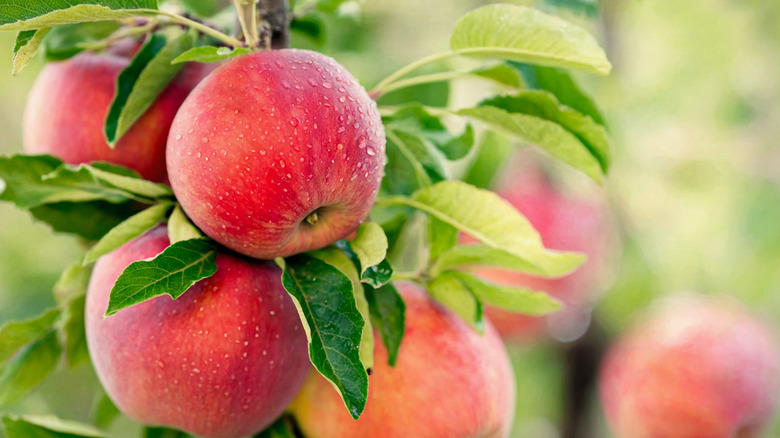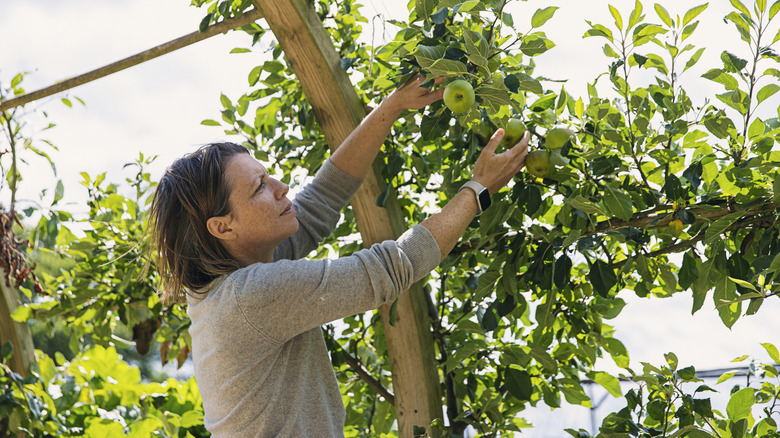Can You Grow Your Favorite Apple Variety At Home? It Depends
If you've ever taken a bite of a crisp Fuji or Honeycrisp apple and thought about how great it would be to have them in your backyard, you're not alone. There's nothing more appealing than plucking fresh apples right off your own tree. But to grow and care for an apple tree isn't always as simple as sticking a seed in the ground and waiting for fruit to appear. Popular apple varieties do well in certain environmental conditions but replicating them at home can be complicated.
Popular grocery store apples all have different environmental needs. Fuji apples, for instance, require long growing seasons and mild winters with plenty of sun, making them best adapted to USDA hardiness zones 5 through 9. Honeycrisp apples, known for their sweet-tart flavor, are hardy in zones 3 through 7 but need well-drained soil and at least 700 chilling hours (time spent below 45°F) to produce fruit. In contrast, the Granny Smith apple is more flexible and can grow in hardiness zones 5 through 9 as long as it has a sunny spot and loamy soil.
Some varieties also do poorly in humid or rainy areas susceptible to diseases such as fire blight or apple scab. Cortland and Empire apples, while excellent for northern gardens, are more susceptible to these diseases, making them a challenge in regions with high humidity. Areas with short growing seasons or variable winter cold can also be troublesome. Pink Lady, for instance, does better in the hotter climates of zones 5 through 9.
Selecting the right apple tree for your yard
To maximize your success, start by finding your USDA hardiness zone, which provides an overview of the apple varieties that can withstand the winter temperatures in your area. Next, think about your local climate, soil type, and the number of chilling hours your area generally receives. Many apple varieties require over a thousand chilling hours in winter to ensure dormancy and fruiting cycles are synchronized in the spring.
For colder regions, zones 3 through 6, varieties such as McIntosh, Haralson, or Honeycrisp are the best heirloom apple trees to grow because of their cold hardiness and higher chilling hour requirements. Conversely, if you live in warmer regions of zones 6 through 9, Fuji, Gala, or Pink Lady might be better options. Another factor is the soil; apples do best in well-drained, slightly acidic soil that has a pH of 5.8 to 7.0. If your soil isn't in good condition, amendments might be needed.
If you really want to be sure, contact your local agricultural extension office or a nearby nursery. These resources can often offer low or no-cost guidance based on your area. They can also recommend disease-resistant apple varieties or even lesser-known heritage apples that might thrive beautifully in your location. Choosing the correct type of tree for your conditions from the start is one of the best tricks for planting and growing healthy apple trees and will save you from disappointment down the line.

